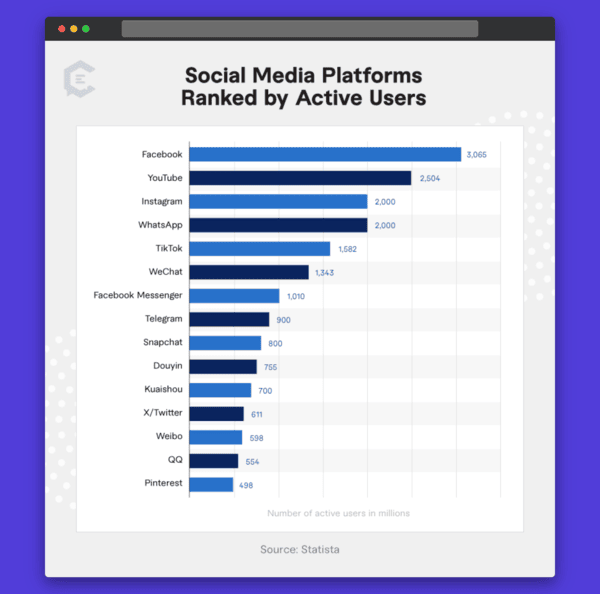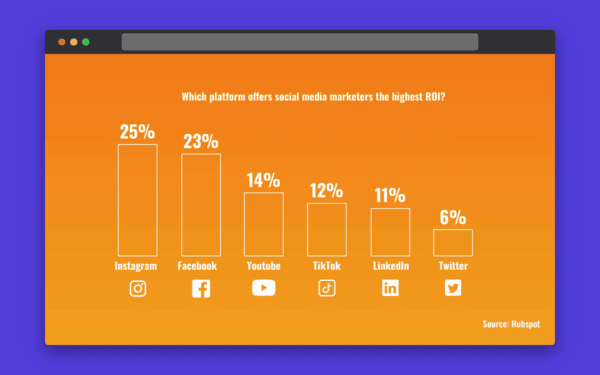Social media is a game-changer for businesses, but without a clear plan, it’s easy to get lost in the noise.
Enter your social media plan.
A social media plan outlines your goals, content strategy, and how to engage with your audience, ensuring every post works toward achieving your business objectives.
In this guide, we'll show you how to create a plan that saves you time, maximises engagement, and delivers real results.
Table of contents
- What is a social media plan?
- Why your business needs a social media plan
- Steps to create a social media plan
- Step 1: Set goals and KPIs
- Step 2: Know your audience
- Step 3: Choose platforms & formats
- Step 4: Create a content calendar
- Step 5: Set up reporting
- Tips for maintaining and optimising your social media plan
- FAQ Section
What is a social media plan?
A social media plan is your roadmap for showing up online with purpose. It gives you structure and outlines what you’ll post, where you’ll post it, and why.
A good social media plan usually includes:
- Your goals. What are you trying to achieve? More brand awareness? Website traffic? Sales?
- Your audience. Who are you talking to? What platforms do they use? What kind of content do they engage with?
- Your content strategy. The types of content you’ll share (like videos, graphics, behind-the-scenes posts, or tips) and the key messages you want to communicate.
- Your posting schedule. When and how often you’ll post on each platform.
- Your platforms. Which social networks will you focus on and why?
- Your engagement strategy. How you’ll interact with your audience and build a community.
- Analytics and KPIs. How you’ll track performance to see what’s working and where to adjust.
Why your business needs a social media plan
Having a clear plan gives your efforts direction. It helps you focus on what matters instead of chasing likes or scrambling for last-minute content. More importantly, it ties your social activity back to your actual business goals—whether that’s growing your audience, driving traffic to your website, or boosting sales.
Here’s why a social media plan isn’t just nice to have, but essential:
- Consistency builds trust. When you show up regularly and with purpose, your audience is more likely to see you as reliable and worth following.
- You save time and headspace. With a plan in place, you’re not constantly asking, “What should I post today?” You’ve already mapped it out.
- You stay aligned with your brand. A good plan keeps your messaging, tone, and visual identity consistent across every platform.
- It’s easier to measure results. When you’ve set clear goals and know what you’re tracking, you can actually tell what’s working and what’s not.
- You get better ROI. Planning helps you focus on high-impact content and strategies, so you’re not wasting time (or ad spend) on things that don’t deliver results. You can also see which platforms lead to the highest ROI, and it makes it easier to measure your specific numbers.
- It supports long-term growth. Instead of chasing trends or short-term wins, you’re building a sustainable online presence that grows with your business.
On the flip side, winging it without a plan often leads to inconsistent messaging, wasted time, and missed opportunities. You might post too often, not enough, or on the wrong platforms altogether. And without clear goals or metrics, it’s hard to know if your efforts are even making a difference. In the end, guesswork rarely leads to growth.
Steps to create a social media plan
Step 1: Set goals and KPIs
Before you dive into content ideas or platforms, start with the big picture: What do you actually want to achieve on social media? Your goals should guide everything you do—from the kind of content you create to how you measure success.
Think about how social media fits into your wider business or marketing objectives. Are you trying to:
- Build brand awareness?
- Drive traffic to your website?
- Generate leads or sales?
- Grow a loyal community?
- Provide customer support?
Once your goals are clear, define the KPIs (key performance indicators) that will help you track progress. These are the numbers that tell you if your strategy is working. For example:
✅If your goal is awareness, track metrics like reach, impressions, or follower growth.
✅If it’s engagement, focus on likes, comments, shares, and saves.
✅For sales or leads, look at click-through rates, conversions, or sign-ups from social media.
💡Pro tip: Make your goals SMART—Specific, Measurable, Achievable, Relevant, and Time-bound. Instead of saying “get more followers,” try “increase Instagram followers by 20% in three months.”
Step 2: Know your audience
You can create the best content in the world. But if it’s not speaking to the right people, it won’t get you very far.
Understanding your audience is key to creating content that connects, converts, and keeps people coming back. This means going beyond basic demographics and getting to know what makes your audience tick.
Start by asking:
- Who are they? (Age, location, job, interests)
- What problems do they have that your product or service can solve?
- What kind of content do they enjoy—quick tips, behind-the-scenes stories, tutorials, memes?
- When and where are they most active online?
- How do they talk? What tone and language will resonate with them?
This step is crucial because different audiences hang out on different platforms and engage with content in various ways. A Gen Z audience might love TikTok and memes, while B2B decision-makers prefer insightful LinkedIn posts or YouTube videos.
Step 3: Choose platforms & formats
Not every social media platform is right for every business—and that’s totally okay. The key is to focus your energy where it counts. It’s better to show up consistently on one or two platforms than to spread yourself thin trying to be everywhere at once.
Start by looking at where your audience is already spending their time and what kind of content performs well there.
Also, consider the types of content you enjoy creating and can commit to consistently. Some platforms favour short-form video, while others work best with images, articles, or conversations.
Here are a few tips to help you choose the right platform(s):
- Go where your audience is. Don’t guess. Check the data and your analytics to see which platforms are already driving engagement. If you don’t have any analytics yet and are starting entirely from scratch, you can always just go where the most people are right now (read: Facebook).

- Match the platform to your content style. Love video? Try TikTok, YouTube, or Instagram Reels. Prefer written content? LinkedIn or X (formerly Twitter) could be a better fit.
- Consider your industry. B2C brands often do well on Instagram, Facebook, and TikTok. B2B companies typically find more traction on LinkedIn.
- Check the competition. See where similar brands are active and what’s working for them, but aim to offer something uniquely yours.
- Start small and scale. Focus on one or two platforms first. Once you’ve nailed your strategy, you can expand.
Once you’ve picked your platforms, decide which content formats you'll focus on, like videos, graphics, carousels, stories, or live streams. Think about what your audience enjoys and what you can realistically maintain.

How to Create a Winning Social Media Strategy in 10 Steps
Step 4: Create a content calendar
Once you know your goals, audience, and platforms, it’s time to get organised. That’s where a social media content calendar comes in.
A content calendar is simply a plan for what you’ll post and when. It helps you stay consistent, avoid last-minute stress, and keep your messaging aligned across all platforms. No more scrambling to come up with ideas or forgetting to post for days at a time!
Start by mapping out:
💡Key dates. Think holidays, seasonal events, product launches, or industry milestones.
💡Content themes. For example, tips on Mondays, behind-the-scenes on Wednesdays, and customer stories on Fridays.
💡Formats. Mix it up with videos, images, carousels, Reels, Stories, or polls—whatever suits your strategy and audience.
💡Captions and hashtags. Plan your messaging so your posts stay on-brand and purposeful.
You don’t need fancy tools to start. Google Sheets works just fine. Then just upload your content to tools like Sendible, which has a post scheduler, a content management tool to help with planning, and a Smart Queues feature that identifies evergreen content you can repurpose forever.
And remember: your calendar isn’t set in stone. Keep it flexible so you can respond to trends, real-time events, or spontaneous ideas when they pop up.
Step 5: Set up reporting
Creating and sharing content is only half the job. If you want your social media plan to actually work, you need to track your results. That’s where reporting comes in.
Setting up regular reporting helps you understand what’s performing well, what’s falling flat, and where you can tweak your strategy for better outcomes. Without it, you're basically flying blind.
Start by revisiting the goals and KPIs you set back in Step 1. Then choose a few key metrics to monitor on a regular basis—weekly, fortnightly, or monthly, depending on how active you are. These might include:
✅Follower growth
✅Engagement rate (likes, comments, shares, saves)
✅Reach and impressions
✅Click-through rates
✅Website traffic from social
✅Leads or conversions from specific posts or campaigns
Most platforms have built-in analytics tools, like Instagram Insights, LinkedIn Analytics, and Facebook Business Suite. You can also use third-party tools like Sendible to set up personalised reporting.
Keep your reports actionable and straightforward. Look for patterns—what content formats get the most engagement? What topics spark conversation? What times or days work best for your audience?
And don’t forget: the goal isn’t just to gather data, but to use it. Regular reporting helps you make smarter decisions, optimise your content, and ultimately get more value out of your social media efforts.
Tips for maintaining and optimising your social media plan
Creating a social media plan is just the start. Keeping it effective means staying flexible and regularly refining your approach.
- Use analytics to guide improvements. Check your performance data regularly to spot trends, test new ideas, and double down on what’s working.
- Make the most of management tools. Platforms like Buffer, Hootsuite, Later, and Sendible can help you schedule content, track performance, and stay organised without the overwhelm.
- Stay on top of trends. Monitor industry trends and popular content formats to keep your strategy fresh and engaging.
- Engage consistently. Don’t just post. Interact with your audience, reply to comments, and build a community around your brand.
FAQ Section
What should be included in a social media plan?
A social media plan should include:
- Clear goals (e.g. brand awareness, lead generation)
- Target audience insights (demographics, interests)
- Content strategy (types of content, themes, formats)
- Platform selection (where your audience is most active)
- Posting schedule (when and how often you’ll post)
- Engagement strategy (how you'll interact with your audience)
- KPIs (metrics to measure success like reach, engagement, conversions)
- Analytics and reporting (to track performance and optimise your approach)
How far ahead should I plan social media content?
I recommend planning social media content at least 1-2 weeks in advance to ensure consistency and avoid last-minute stress. For larger campaigns or seasonal content, planning 1-3 months ahead gives you ample time to fine-tune and stay organised.
Flexibility is key, though. Leave room for spontaneous posts and adjustments based on real-time events or trends.
What’s the difference between a social media plan and a strategy?
A social media strategy is the overall approach to achieving your business goals through social media, outlining your long-term vision, target audience, and key objectives.
A social media plan is a detailed, actionable roadmap that outlines the specific steps, content, and schedule you’ll follow to execute that strategy.
Essentially, the strategy is the "what" and "why," while the plan is the "how" and "when."
Conclusion
A well-crafted social media plan is essential for driving meaningful results and staying organised in the fast-paced world of social media.
By following these tips, you’ll be able to create a strategy that works for your business and delivers long-term success.
And to make things better, you can use Sendible to visually plan your content, label with campaigns (or content pillars) to track performance, access data in one click, and automate your reporting.







